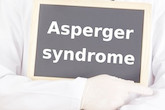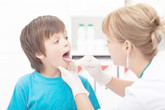Treatment Options Available for Pityriasis Rosea
Although the Pityriasis Rosea disease might look painful and deadly, it is quite a harmless skin disease on the contrary! The disease causes the appearance of itchy scaly patches called 'Herald Patch' on one's torso, neck, legs and arms and it mostly affects people belonging to the age group of 10-35 years. These itchy patches are generally oval in shape, of one or two inches in length and they have a salmon-colored center which is wrapped around by a larger ring that is dark pink in color.
One of the most common treatment mistakes that people make when it comes to Pityriasis Rosea is that they administer the treatment options for ringworm infection since the herald patch look more or less like ringworm infection.
Pityriasis Rosea is not really treatable and one should allow the disease to run its course since it would automatically die down by itself. However at times the itching associated with this disease can simply become too much to tolerate and in such cases, one should look for Pityriasis Rosea treatment options. The following are the treatment options generally prescribed for people afflicted with Pityriasis Rosea:
Over-the-counter cooling lotions
This is one of the most common Pityriasis Rosea treatment options but it is extremely effective. Most of the patients suffering from this skin condition develop herald patches that can last for 2-14 days. These rashes can get very itchy at times and when that happens one should apply a cooling calamine lotion that is easily available over the counter at medical supplies store or pharmacies. Always look for one that soothes the skin and is mild. It is advisable to choose a lotion that comes with menthol or camphor for best results. Alternatively one can also use corticosteroid cream for topical application. A good example of this kind of cream would be Cortaid or Cortizone-10.
UV light therapy
This is a treatment option that is available to patients suffering from advance cases of Pityriasis Rosea where the herald patch covers a major portion of the body and is no longer manageable with cooling lotions and creams. In this type of treatment, the individual's skin is exposed to ultraviolet rays (only UV-B rays) for a short period of time in order to reduce the itching. This kind of treatment requires more than one sitting, the patients are generally recommended to carry on the UV light therapy for a week's time minimum. The treatment speed up the healing process but it may turn the rashes and the surrounding skin more red in color, thus making it seem as though one is experiencing mild sunburn.
Medications
Medications are the best Pityriasis Rosea treatment options for patients afflicted by mild to moderate symptoms. Popping in some medications is an effective way of taking care of the itching issue. In such cases, antihistamine pills and steroid pills work best. However, before consuming any kind of antiviral medication it would be advisable to consult a doctor first and find out his/her recommendations. Additionally, the doctor would also provide you information on the dosage of these medications, which is usually 10mg of it once a day. Doctors generally prescribe non-sedating antihistamine pills like Cetirizine, Fexofenadine, Loratadine, etc in the morning while sedating pills like Hydrozine are prescribed for evening use. This way the patients won't experience drowsiness and they can get on with their day's activities with ease.
Emollients
Patients of Pityriasis Rosea are usually advised to avoid using soap since it irritates the rashes. Instead of soap, the patients can use emollients. These are basically ointments, lotions or creams that are designed for the purpose of helping the skin retain its moisture and to control the itchiness to a significant extent. Emollients should generally be applied in the direction of the hair growth in a gentle manner.
Other treatments
Of course there are other Pityriasis Rosea treatment options falling under the 'miscellaneous' category that one can follow in case the above treatment options do not work. One such treatment is the application of an antiviral medication called Acyclovir. This medication is typically used for treating herpes infections but it is effective for Pityriasis Rosea as well. Another treatment option would be the consumption of Erythromycin, which is an antibiotic that treats bacterial infections.
| Written by: | Michal Vilímovský (EN) |
|---|---|
| Education: | Physician |
| Published: | August 1, 2013 at 11:07 PM |
| Next scheduled update: | August 1, 2015 at 11:07 PM |
Related articles
Get more articles like this in your inbox
Sign up for our daily mail and get the best evidence based health, nutrition and beauty articles on the web.






Ache in left arm that you should not ignore
Alkaline water dangers: why you should not drink it
How to Avoid Sleepiness While Studying?
23 Foods That Increase Leptin Sensitivity
Low dopamine (e.g. dopamine deficiency): causes, symptoms, diagnosis and treatment options
Swollen taste buds: the ultimate guide to causes, symptoms and treatment
Thin endometrial lining: causes, symptoms, diagnosis and treatment
Pimples inside nose: the complete guide
Holes in tonsils: definition, symptoms, treatment and prevention
How to deal with an ingrown hair cyst
Allegra vs. Zyrtec vs. Claritin
How to get rid of phlegm (excessive mucus) in throat? Detailed guide to medical and home remedies, symptoms and causes
What causes stomach ache after meals?
Allergy to penicillin and alternative antibiotics
Liver blood test results explained